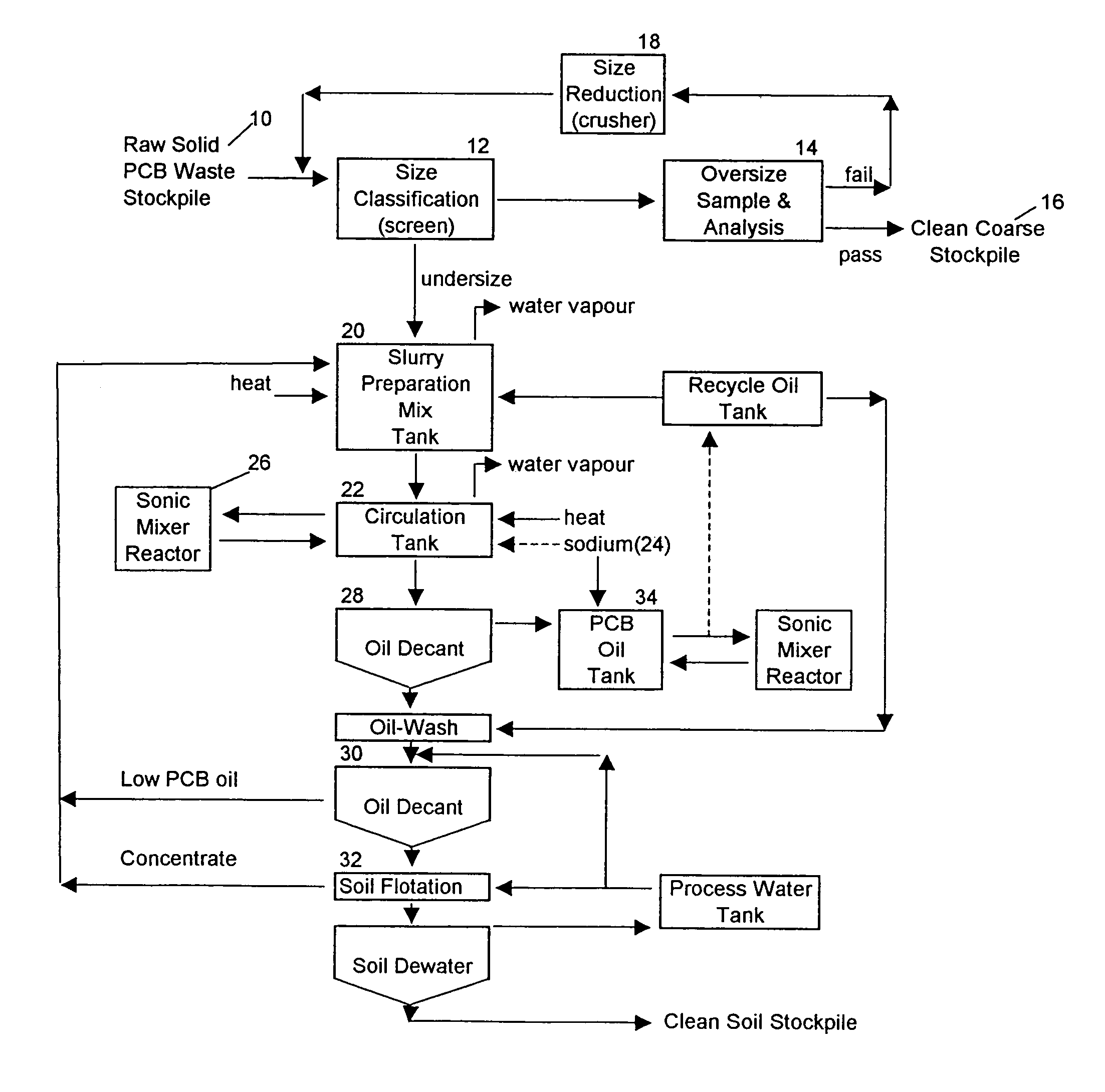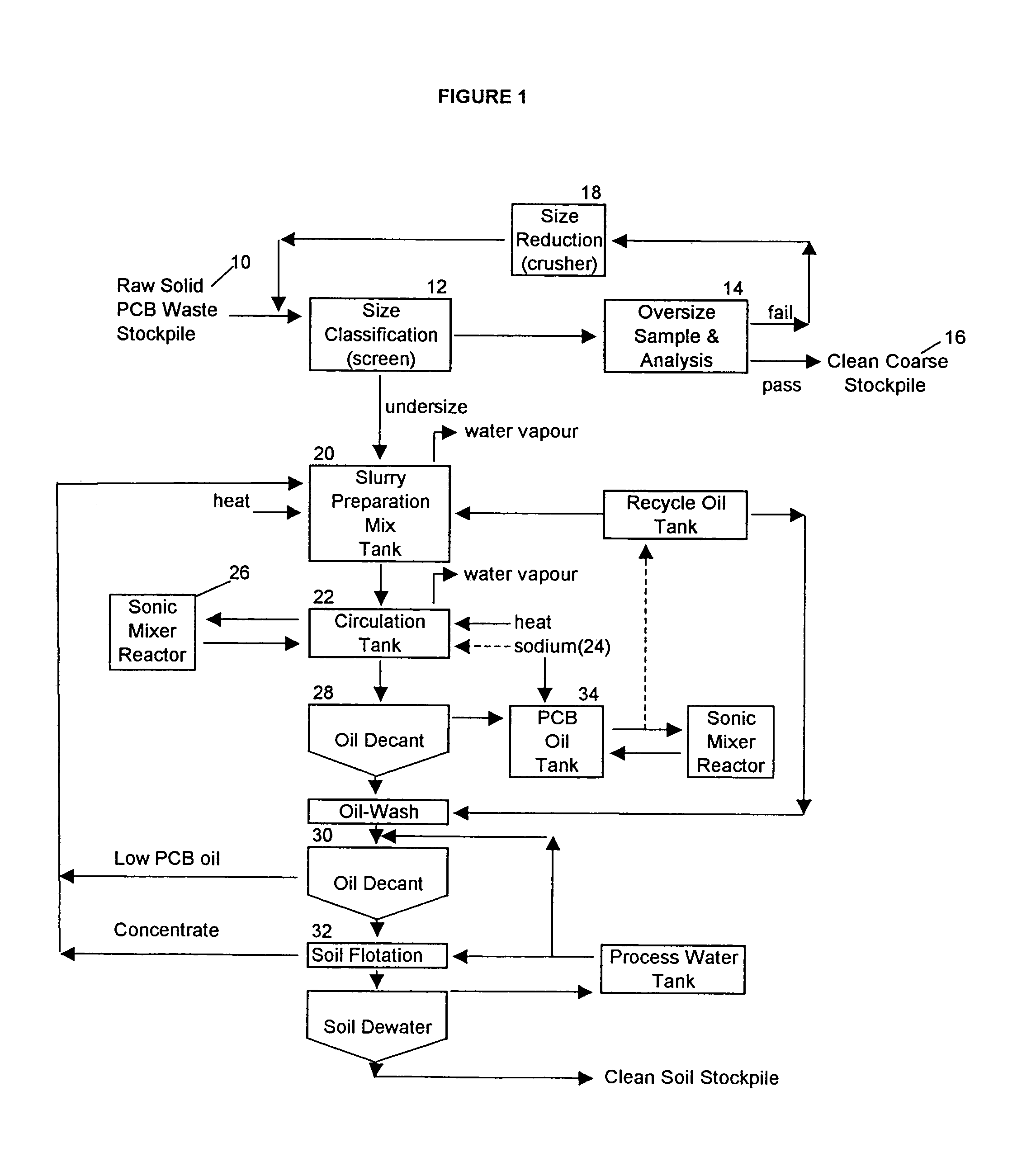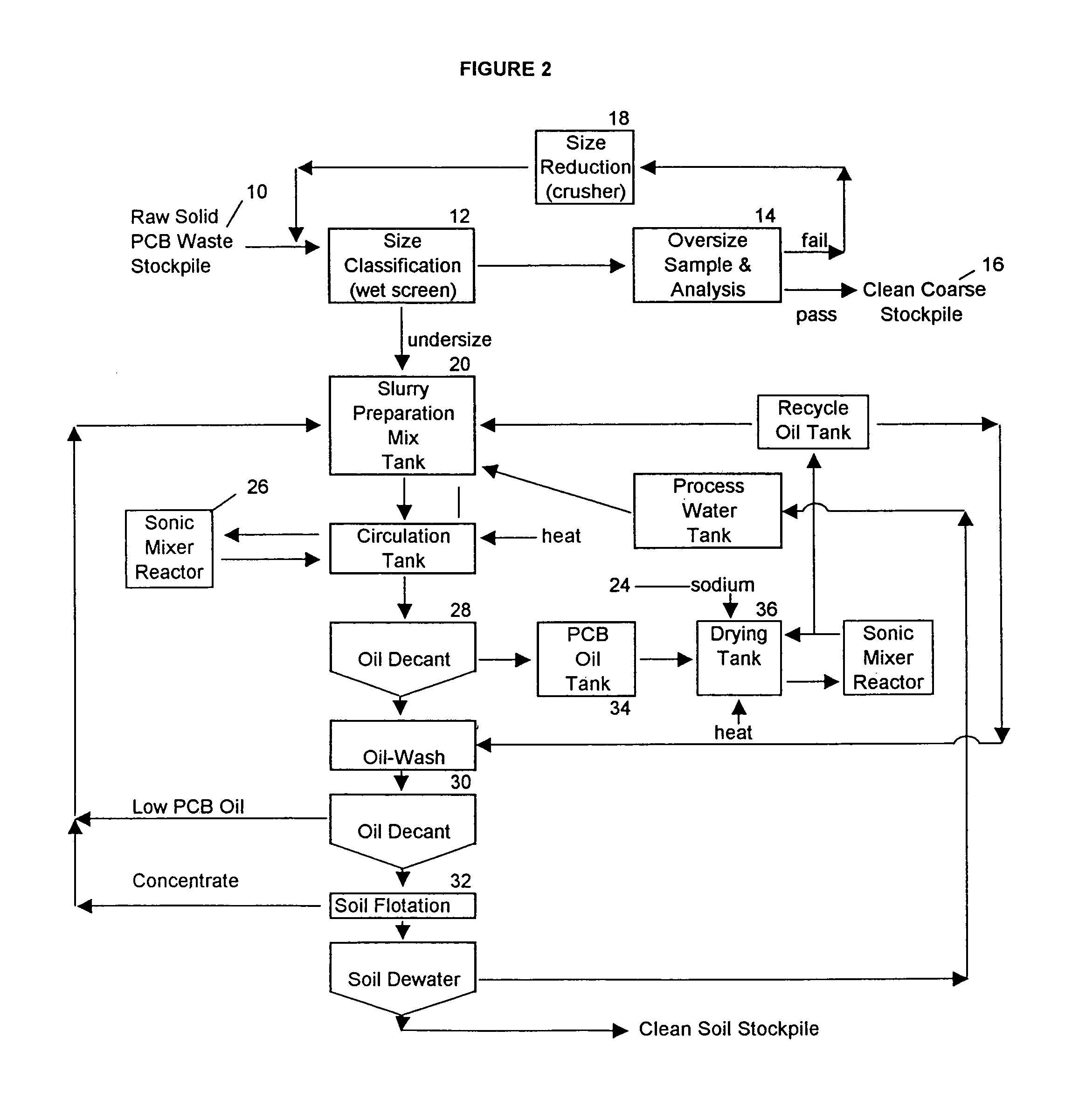Sonication treatment of polychlorinated biphenyl contaminated media
a technology of polychlorinated biphenyl and contaminated media, which is applied in the direction of hydrocarbon oil treatment, lighting and heating apparatus, stationary conduit assemblies, etc., can solve the problems of entanglement of air pollution, significant soil contamination, and permanent retention liability, and achieves the risk of atmospheric emissions. , the cost of incineration is high and the effect of reducing the risk of contamination
- Summary
- Abstract
- Description
- Claims
- Application Information
AI Technical Summary
Benefits of technology
Problems solved by technology
Method used
Image
Examples
example 1
One-Stage Batch Treatment of Soil in Single Vessel with Axial Sonication
[0084]A sample of PCB contaminated soil was obtained from a secure landfill at a Greater Vancouver, B.C., Canada location. This fill was constructed for the sole purpose of containing high level (>50 ppm) PCB contaminated soil and debris from demolition and cleanup of an electrical manufacturing plant site. Excavated material was sampled for analysis and all material containing>50 mg / Kg (ppm) of PCBs was placed in the double lined, covered fill. The sample of approximately 20 Kg was processed initially over a −6 mesh shaking screen to separate the sieved soil from coarse cobble rock, concrete, steel, and debris.
[0085]The soil (−6 mesh) was air dried, and then split using a riffle splitter (a device for obtaining representative subsamples of solid materials, see Taggart) to provide representative samples for testwork and analysis.
[0086]A 2-kilogram sub-sample of the soil was then mixed with 0.8 L of kerosene and ...
example 2
Batch Treatment of Soil in Single Vessel with Axial Sonication
[0098]PCB-contaminated soil was air-dried and sieved to −6 mesh. Two kilograms of soil was combined with 0.6 litres kerosene and 45 grams of solid sodium metal in a 3.2 litre sonication vessel axially mounted to a 20 kilowatt (kW) sonic driver. The sealed sonication chamber was heated to 115° C. using heat from a propane torch to melt the sodium metal. The sonic chamber heating jacket was filled half-way with ethylene glycol antifreeze to aid in heat transfer to the sonication chamber ingredients. The sonication chamber was opened to sample soil after interval sonic mixing times of 1, 2, and 5 minutes. The presence of sodium was determined by addition of a few drops of water to the analytical sample and observation of effervescence from hydrogen produced by water reaction with residual sodium. The following table illustrates PCB destruction as a function of time using the above approach on a soil with an initial PCB conte...
example 3
One-Stage Flow-through Treatment of Soil in Two Vessels with Probe Sonication
[0101]To investigate scale-up of the technology, a test system was constructed as follows (shown in FIG. 3):[0102]a slurry reservoir / recirculation tank 46 24 inches in diameter and 6 feet high was constructed of schedule 80 steel pipe and plate, and mounted on legs to permit heating of the tank bottom plate by a gas burner;[0103]a 10 HP vertical sump pump 48 was installed in the recirculation tank;[0104]a reaction chamber 44 18 inches in diameter and 3 feet high with a 45° cone bottom was fabricated with 2 side overflow pipe stubs 45 (normal and high level);[0105]the reaction chamber 44 was mounted on an angle iron frame adjacent to the circulation tank 46 and the overflow ports 45 were connected by 4″ diameter nitrile rubber hoses to corresponding pipe stubs on the circulation tank 46;[0106]the 5 kW vertical sonic generator 40 was mounted on the top of the reaction tank 44 so that vibrating probe 42 would ...
PUM
| Property | Measurement | Unit |
|---|---|---|
| temperature | aaaaa | aaaaa |
| temperature | aaaaa | aaaaa |
| temperature | aaaaa | aaaaa |
Abstract
Description
Claims
Application Information
 Login to View More
Login to View More - R&D
- Intellectual Property
- Life Sciences
- Materials
- Tech Scout
- Unparalleled Data Quality
- Higher Quality Content
- 60% Fewer Hallucinations
Browse by: Latest US Patents, China's latest patents, Technical Efficacy Thesaurus, Application Domain, Technology Topic, Popular Technical Reports.
© 2025 PatSnap. All rights reserved.Legal|Privacy policy|Modern Slavery Act Transparency Statement|Sitemap|About US| Contact US: help@patsnap.com



